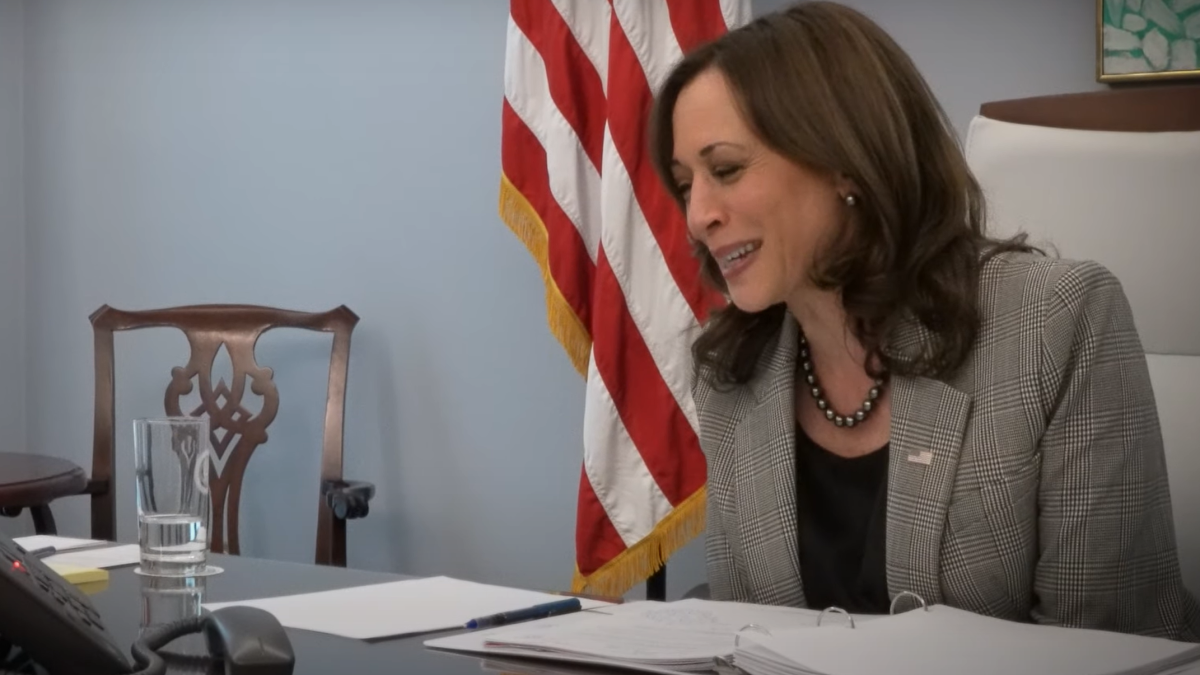It’s time to modernize the fight against space junk, U.S. regulators say. The Federal Communications Commission (FCC) is pledging to update the rules it enacted just two years ago to address space debris, with a new focus on in-space servicing assembly and manufacturing (ISAM) risks and opportunities. “We believe the new space age needs new rules,” FCC chair Jessica Rosenworcel said in an Aug. 5 statement (opens in new tab). Existing regulations, she added, were generally “designed for a time when going to space was astronomically expensive and limited to the…
Read MoreMonth: August 2022
Watch live: VP Kamala Harris discusses commercial space progress
U.S. Vice President Kamala Harris will deliver a speech on the commercial space sector, and you can watch it live. Harris, the chair of the National Space Council, will discuss an update live on NASA Television at 4:35 p.m. EDT (2035 GMT). You can watch it here at Space.com, or on NASA Television directly (opens in new tab). The vice-president’s schedule says the speech will provide an update on “how the Biden-Harris administration will support the commercial space sector,” according to SpacePolicyOnline.com (opens in new tab). Earlier in the day,…
Read More‘Bouncing’ universe theory still can’t explain what came first
New research highlights a troubling problem with concepts of a cyclical universe that experiences infinitely alternating periods of rapid expansion and contraction, known as ‘bouncing universe’ models. These bouncing universe models suggest the cosmos has no beginning, eliminating the need for a troubling singularity prior to the initial period of rapid inflation — commonly known as the Big Bang — needed by ‘beginning of time’ models. University at Buffalo researchers say a newly suggested bouncing universe recipe that attempts to deal with the problem of entropy — the measure of unusable…
Read MoreHubble Peers at Celestial Cloudscape
This celestial cloudscape from the NASA/ESA Hubble Space Telescope captures the colorful region in the Orion Nebula surrounding the Herbig-Haro object HH 505.
Read MoreNASA TV to Cover SpaceX Cargo Dragon Departure from Space Station
A SpaceX Dragon cargo resupply spacecraft returning science to Earth for NASA is set to depart the International Space Station on Thursday, Aug. 18.
Read MoreNASA Transfers Landsat 9 Satellite to USGS to Monitor Earth’s Changes
NASA transferred ownership and operational control on Thursday of the Landsat 9 satellite to the U.S. Geological Survey (USGS) in a ceremony in Sioux Falls, South Dakota.
Read MoreNASA, Boeing to Hold Media Update on Starliner Progress
NASA and Boeing will host a media teleconference at 1 p.m. EDT Thursday, Aug. 25, to provide an update on the agency’s Boeing Crew Flight Test (CFT) to the International Space Station – the first flight with astronauts on the company’s CST-100 Starliner spacecraft.
Read MoreMeteor showers and shooting stars: Formation and history
Meteor showers appear when crumbs of dust (meteoroids) from asteroids or comets enter Earth’s atmosphere at very high speeds. During their journey through the atmosphere, meteors rub against air particles, creating friction and heat. The heat then vaporizes most meteors, resulting in bright streaks of light across the sky, or shooting stars. Dust and particles perpetually bombard Earth from all directions occasionally resulting in solitary meteors. There also are regularly timed “meteor showers” when astronomers can make better predictions about how many meteors will hit Earth’s atmosphere, and from what…
Read MoreArtemis I Moonikin Campos Inspection and Install
Artemis I Moonikin Campos Inspection and Install
Read MoreMaxar will build 14 missile-tracking satellites for new warning system
Maxar Technologies will help build a U.S. missile-warning satellite system. The Colorado-based company will supply 14 tracking satellites as a part of the Space Development Agency’s (SDA) infrastructure in orbit to assist with U.S. anti-satellite weapon technology, Maxar announced (opens in new tab) Tuesday (Aug. 9). The satellites will be manufactured by 2024 for L3Harris Technologies, which along with Northrop Grumman are building the first two tranches of the SDA’s constellation. Maxar’s new announcement refers to the second batch of satellites, which L3Harris aims to launch in 2025. Maxar officials stated…
Read More
